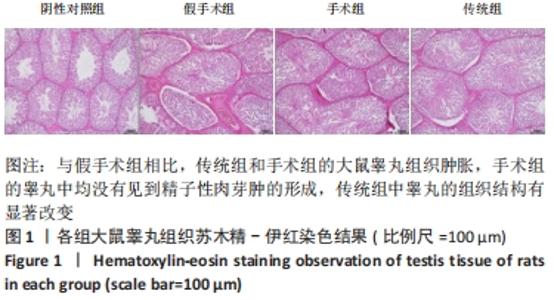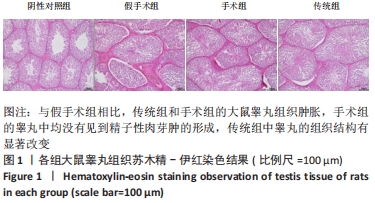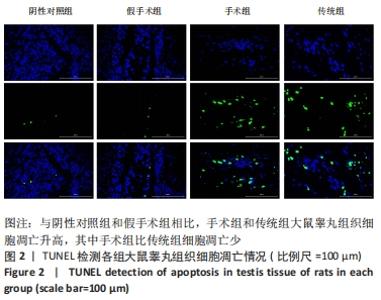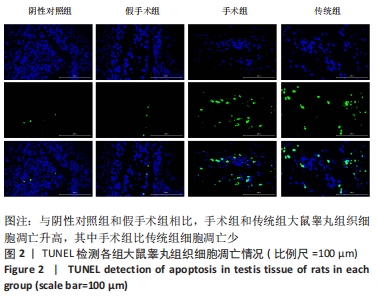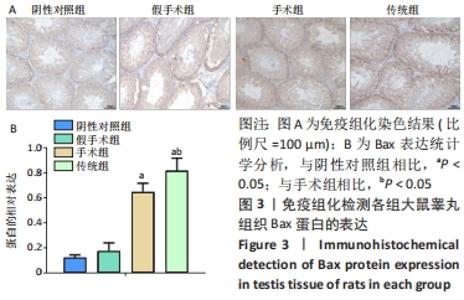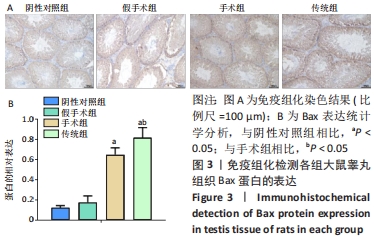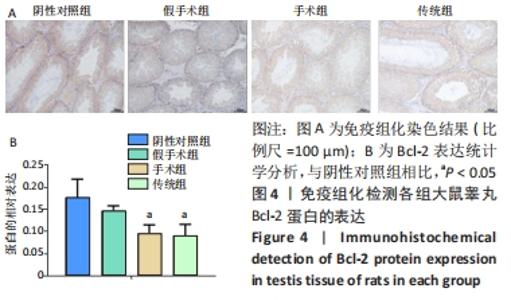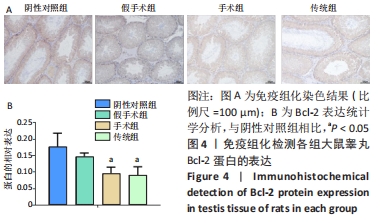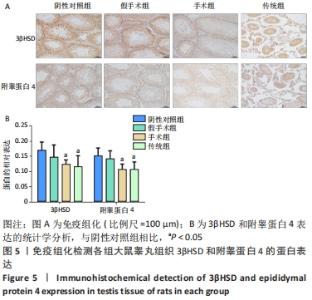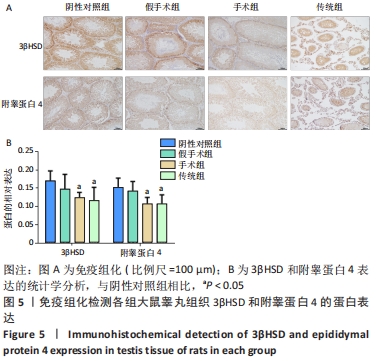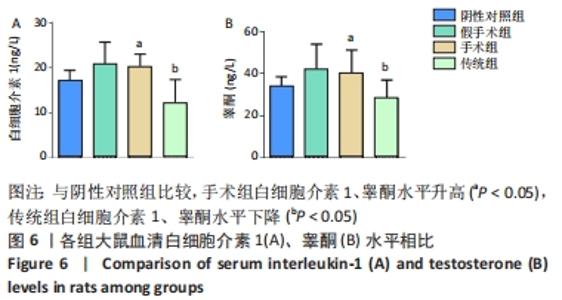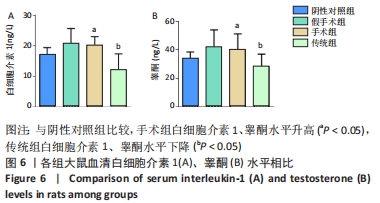[1] RAYALA BZ, VIERA AJ. Common questions about vasectomy.Am Fam Physician. 2013;88(11):757-761.
[2] 叶福文,陈勇,黄国平.手术联合冷袋外敷对男性输精管结扎术后痛性结节的影响[J].深圳中西医结合杂志,2019,29(2):141-142.
[3] WEISKE WH. Vasectomy. Andrologia. 2001;33(3):125-134
[4] 刘云嵘. 中国男性参与计划生育的回顾和展望[J]. 生殖与避孕, 1997,17(2):111-118.
[5] OSTROWSKI KA, HOLT SK, HAYNES B, et al. Evaluation of Vasectomy Trends in the United States. Urology. 2018;118:76-79.
[6] MCDONALD SW. Cellular responses to vasectomy. Int Rev Cytol. 2000; 199:295-339.
[7] GUPTA AS, KOTHARI LK, DHRUVA A, et al. Surgical sterilization by vasectomy and its effects on the structure and function of the testis in man. Briti J Surg. 1975;62(1):59-63.
[8] NEAVES WB. The effect of vasectomy on the testes of inbred Lewis rats. J Reprod Fertil. 1978;54(2):405-411.
[9] WHYTE J, SARRAT R, CISNEROS AI, et al. The vasectomized testis. Int Surg. 2000;85(2):167-174.
[10] FLICKINGER CJ, HOWARDS SS, CAREY PO, et al. Testicular alterations are linked to the presence of elevated antisperm antibodies in Sprague-Dawley rats after vasectomy and vasovasostomy. J Urology. 1988; 140(3):627-631.
[11] LOHIYA NK, DIXIT VP, ARYA M. Long-term effects of vasectomy on the pituitary-gonadal system of rat and mouse. Endokrinologie. 1976;67(2): 152-159.
[12] SILBER SJ. Epididymal extravasation following vasectomy as a cause for failure of vasectomy reversal. Fertil Steril. 1979;31(3):309-315.
[13] 张仁东. 常规与近端开放性输精管结扎对兔睾丸和附睾的影响[D]. 重庆:重庆医科大学,2006.
[14] PENG B, MAO Y, TANG XF, et al. Comparison of spermatogenic damage induced at 6 months after ligation of the vas deferens at proximal and distal locations in the rabbit. Andrologia. 2011;43(2):129-138.
[15] GUPTA I, DHAWAN S, GOEL GD, et al. Low fertility rate in vasovasostomized males and its possible immunologic mechanism. Int J Fertil. 1974;20(3):183-191.
[16] JAROW JP, GOLUBOFF ET, CHANG TS, et al. Relationship between antisperm antibodies and testicular histologic changes in humans after vasectomy. Urology. 1994;43(4):521-524.
[17] MUIR VY, TURK JL, HANLEY HG. Comparison of allergic aspermatogenesis with that induced by vasectomy. I. In vivo studies in the guinea-pig. Clin Exp Immunol. 1976;24:72-80.
[18] JENKINS IL, MUIR VY, BLACKLOCK NJ, et al. Consequences of vasectomy: an immunological and histological study related to subsequent fertility. Br J Urol. 1979;51:406-410.
[19] 李志勇,孙建宁,张硕峰. 水合氯醛和戊巴比妥钠对SD大鼠麻醉效果的比较[J]. 四川动物,2008,27(2):299-302.
[20] 马利,严波,李雨根,等. 大鼠远端输精管结扎术[J]. 川北医学院学报,2014,29(2):188-190.
[21] SETCHELL BP, MADDOCKS S, LATE BROOKS DE. Anatomy, vasculature, innervation, and fluids of the male reproductive tract. //KNOBIL E, NEILL JD. The Physiology of Reproduction. New York: Raven Press. 1994:1063-1175.
[22] 宿宝贵, 潘三强. 男性生殖系统[A]//柏树令, 应大君. 系统解剖学[M]. 北京: 人民卫生出版社,2006:181-189.
[23] DENNISTON GC, KUEHL L. Open-ended vasectomy: approaching the ideal technique. J Am Board Fam Pract. 1994;7(4):285-287.
[24] ERREY B, EDWARDS I. Open-ended vasectomy: an assessment. Fertil Steril. 1986;45:843-846
[25] MOSS WM. A comparison of open-end versus closed-end vasectomies: a report on 6220 cases. Contraception. 1992;46(6):521-525
[26] 钱海森, 毛捷鸿. 近端开放输精管结扎术远期效果观察[J]. 中国男科学杂志,2002,16(1):16.
[27] 刘方苇, 熊世敏, 周远忠,等. 男性输精管结扎术及术后安全性[J]. 广东医学,2017,38(20):3210-3212+3218.
[28] 卢泰, 赵文英, 宋普林. 输精管结扎对大鼠生精细胞凋亡的影响[J]. 中国计划生育杂志,2004,12(5):278-280.
[29] GALGANO MT, HAMPTON GM, FRIERSON HF. Comprehensive analysis of HE4 expression in normal and malignant human tissues. Mod Pathol. 2006;19:847-853.
[30] 席向红,苏荣,贾韶彤,等.精浆中人附睾蛋白4与男性不育症的相关性[J].山东大学学报(医学版),2016,54(5):66-69.
[31] 文任乾,刘美意,黄健初,等. 影响输精管吻合后生育力恢复相关因素的初探[J]. 中国男科学杂志,2003,17(3):184-187.
[32] 刘芙君, 李建远. 附睾蛋白的研究方法及进展[J]. 现代生物医学进展,2008,8(7):1374-1375.
[33] 刘建中, 郭海彬, 邓春华,等. 大鼠睾丸Leydig细胞的培养和鉴定[J]. 中华男科学杂志,2006,12(1):14-17.
[34] 田庚, 李杨, 刘睿智,等.输精管结扎家兔血浆睾酮与皮质醇含量的动态变化[J].白求恩医科大学学报,1997,23(4):353-355.
[35] MOORE C, MOGER WH. Interleukin-1α-induced changes in androgen and cyclic adenosine 3′,5-monophosphate release in adult rat Leydig cells in culture. J Endocrinol. 1991;129(3):381-390.
[36] 刘睿智,李杨,赵丹,等. 输精管结扎家兔外周血淋巴细胞丝裂原反应性,IL-2及巨噬细胞IL-1活性的动态研究[J]. 生殖与避孕, 1995,15(5):356-362.
[37] 王密.大鼠睾丸与腹腔Mφ的IL-1样物质活性及输精管结扎对其影响[J]. 中国病理生理杂志,1994,10(5):503-506.
[38] 赵雪俭,王忠山,林桦,等.输精管结扎术后睾丸组织学变化及其机制的实验研究[J].生殖与避孕,1989,9(3):20-24.
|
